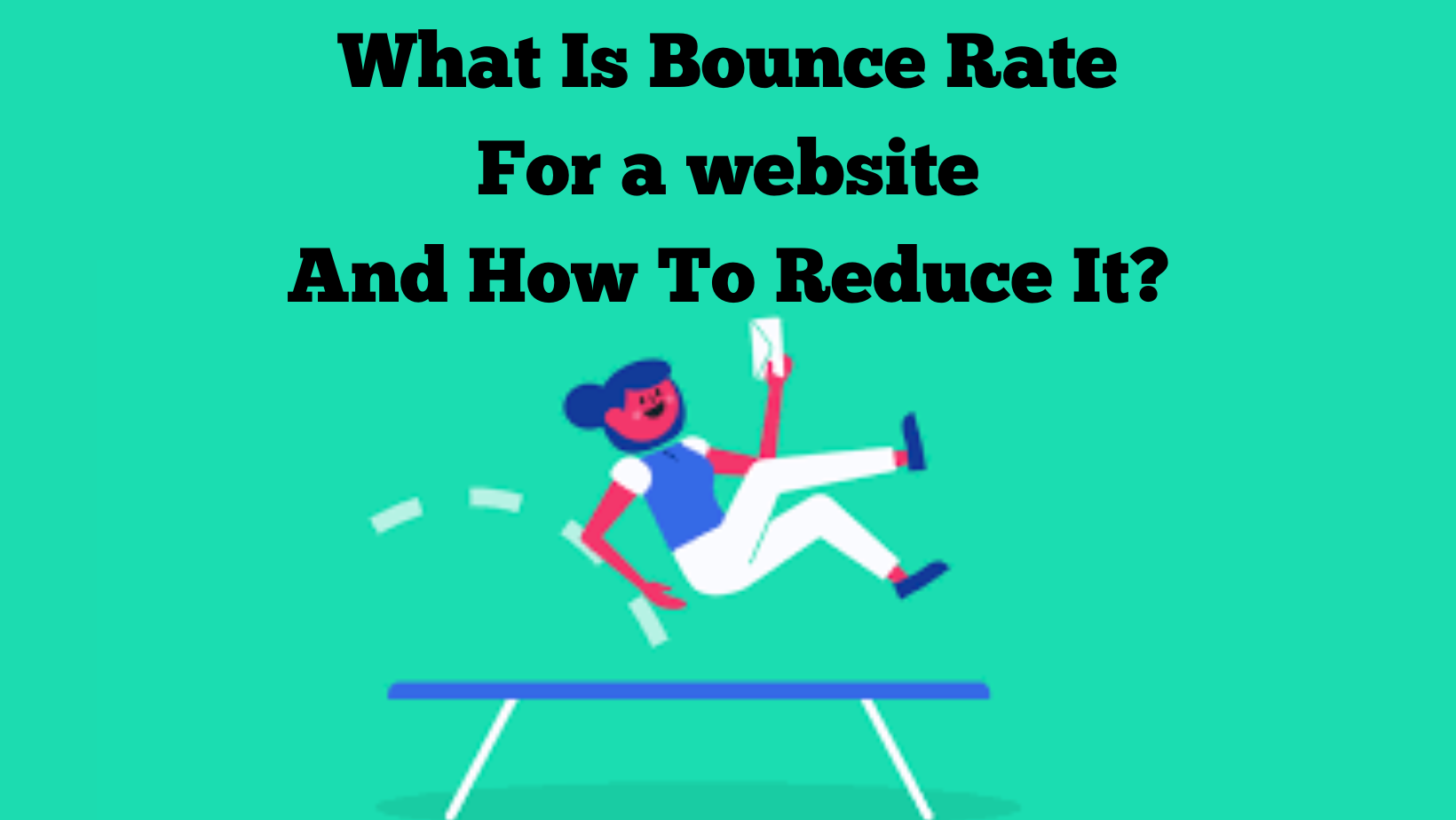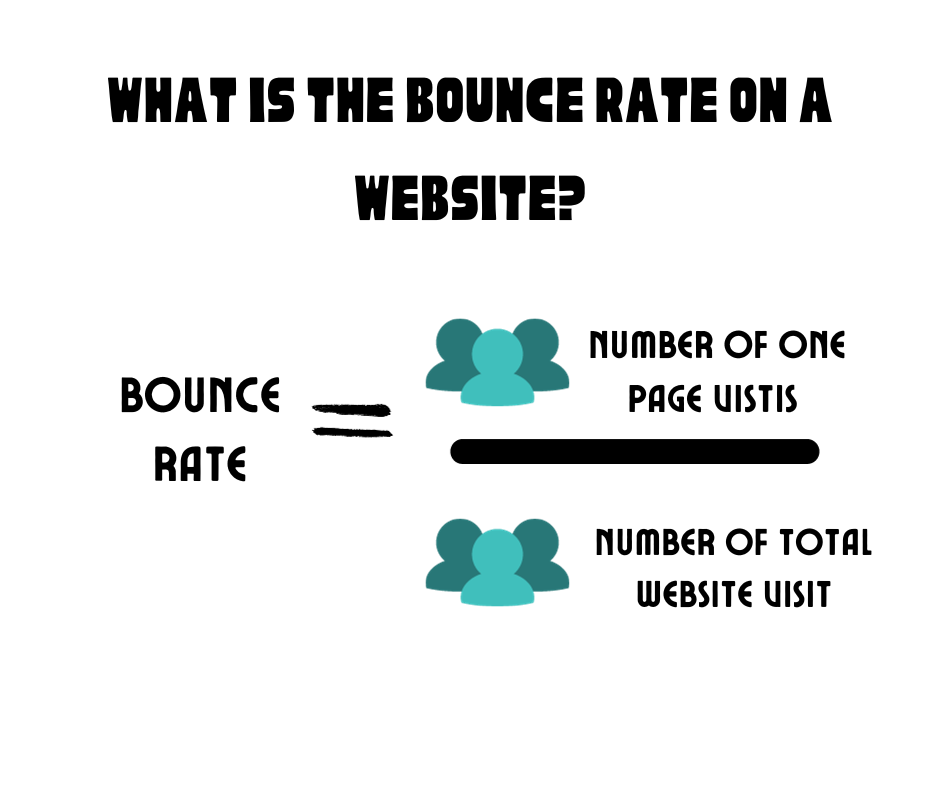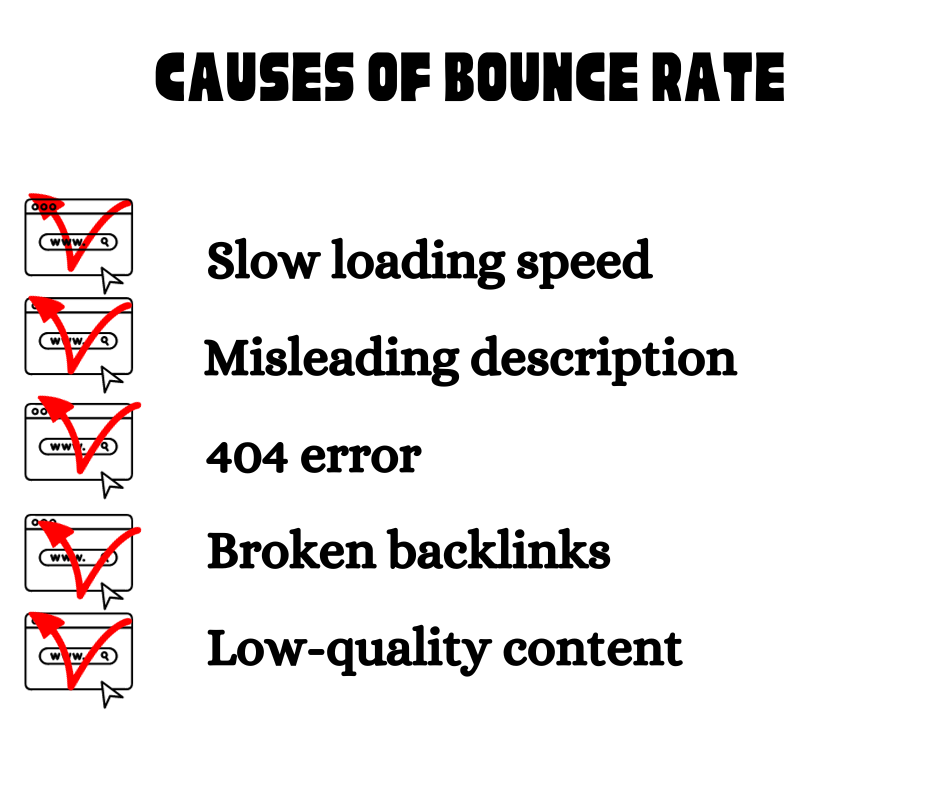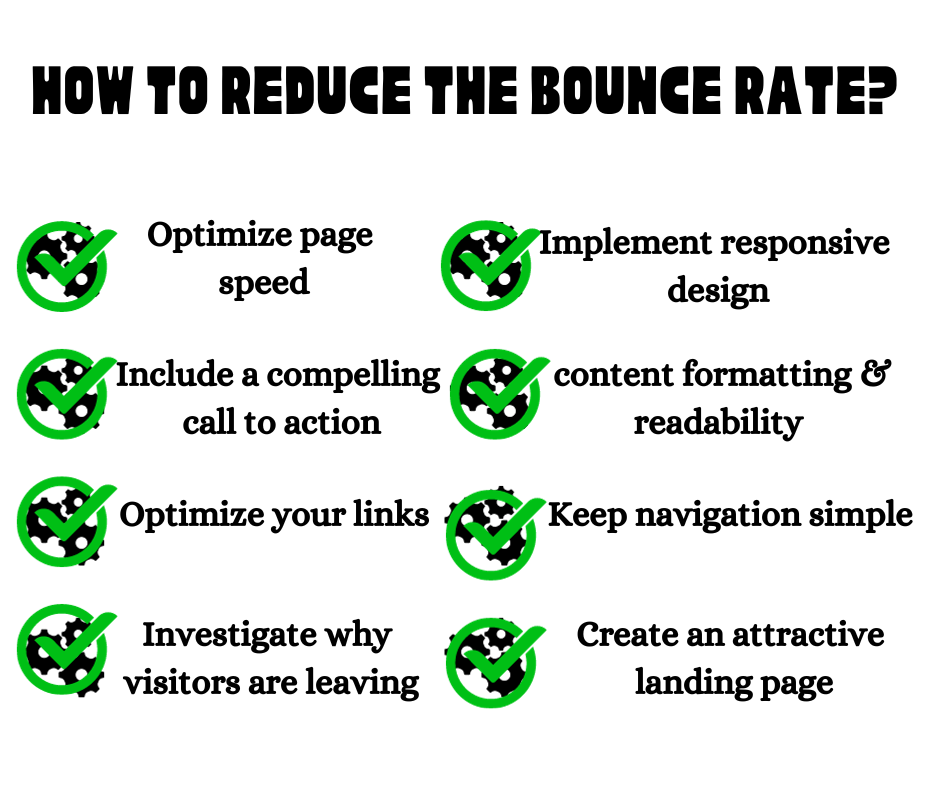Have you ever wondered why your website’s ranking is not improving despite all your efforts? Well, one of the factors that could be affecting your website’s ranking is the bounce rate. But don’t worry, I’m here to help you out!
In this article, I’ll be covering everything you need to know about bounce rates, including what they are, how they affect your website’s performance, and most importantly, how you can reduce them. Let’s dive into the world of bounce rates!

Page Contents:
What is the bounce rate on a website?
When it comes to website engagement, bounce rate is a crucial metric to consider. The bounce rate is the percentage of visitors who leave your website without taking any further action.
It tells you how engaging your content is, and whether or not visitors find it worthy enough to stick around and explore your site further.
There are both good and bad bounce rates to consider. A good bounce rate is typically anything below 40%, as this indicates that visitors are engaging with your content and finding it valuable.
On the other hand, a bad bounce rate is anything over 55%, with serious attention required if the rate surpasses 60% or above.

Does Bounce Rate Matter?
Bounce rate is an essential metric for every website owner to monitor as it serves as a reflection of the user experience. A high bounce rate indicates that users are not finding what they want on your website.
That is resulting in a poor user experience. This can ultimately lead to a lower conversion rate, negatively impacting your revenue.
In addition to affecting your website’s revenue, a high bounce rate can also negatively impact your search engine ranking. Search engines like Google consider bounce rate as a signal of the website’s relevance and importance.
When search engines observe a high bounce rate, they may consider your page or even your entire website as unimportant and lower your ranking.
It’s important to note that all of your SEO efforts, website performance, and sales can depend on the bounce rate of your website. Therefore, it’s crucial to keep an eye on your website’s bounce rate and take the necessary steps to improve it.
Causes of Bounce Rate
High bounce rates can be a result of various factors, including user interest, but it is often attributed to malfunctioning SEO practices and low-quality content.
It is important to understand the possible reasons that may cause users to bounce off a website to minimize the bounce rate. The following are some of the most common causes of high bounce rates:
1. Slow loading speed
The loading speed of a website is a critical factor that impacts the user experience and search engine ranking. A website that takes longer than three seconds to load may have a high bounce rate.
This means that visitors may leave the site without exploring it. This can be frustrating for users and negatively impact the website’s performance.
2. Misleading description
A website’s description is often the first point of contact with potential visitors, and a misleading or inappropriate description can lead to confusion and misunderstanding.
This can result in visitors leaving the site quickly, leading to a high bounce rate. Therefore, it is crucial to ensure that the website’s description accurately reflects the content to avoid any confusion.

3. 404 error
Error pages can significantly impact the user experience, leading to frustration and an increased bounce rate. A 404 error occurs when a user tries to access a page that does not exist on the website.
It is crucial to ensure that error pages are minimized or eliminated to provide a seamless and satisfactory user experience.
4. Broken backlinks
Referral links that are expired or of poor quality can also contribute to a high bounce rate. When a user clicks on a broken referral link, they may be directed to a page that does not exist, resulting in frustration and a negative experience.
Even referral content that is misleading or misunderstood can lead to a bounce back. Therefore, it is essential to ensure that referral links are of high quality and lead to relevant content.
5. Low-quality content
The quality of content plays a significant role in attracting and engaging the audience. Short-form content or content with insufficient knowledge is more likely to be left, leading to a high bounce rate.
Therefore, it is crucial to ensure that the content is of high quality, relevant, and engaging to keep the audience interested and engaged.
How do we reduce the bounce rate?
By paying attention to the best practices of search engine optimization, you can significantly reduce the bounce rates of your website. Regularly monitoring your site can help you identify and address any issues that may be causing visitors to leave the site.
To help you reduce your site’s bounce rate, let’s take a look at some tips and tricks you can implement:
1. Optimize your page speed
Even a slight delay in connection speed can have a significant impact on user engagement. A delay of just 500 milliseconds can result in an 8% decrease in engagement. To address this issue, aim to reduce the size of your CSS, HTML, and JavaScript files.
Audit your page to find and reduce redirects, and improve server response time by addressing problems such as slow database queries, slow routing, or a lack of memory.
Additionally, content distribution networks can help speed up delivery times for different geographic regions. Lastly, compress and optimize any media on your site.
2. Implement responsive design
With the growing use of mobile devices, it’s important to ensure that your site is easy to navigate on a variety of screen sizes. Adjust your fonts and visuals to accommodate different devices. As this can boost your search engine ranking and improve the user experience.
3. Include a compelling call to action
An effective call-to-action is essential for keeping visitors on your site and encouraging them to take action. If you fail to convince your visitors to follow through on your call-to-action, they are likely to leave your site after only a few moments.
If your page is promoting a product, be sure to add a clear and visible call-to-action button or other elements to encourage conversions. Place the call-to-action at the beginning of the page so it’s visible right away.
4. Pay attention to content formatting and readability
Proper formatting and readability are key to engaging your visitors. Avoid using small fonts and big blocks of text, as these can be overwhelming and difficult to read.
Instead, use slightly larger fonts and break up your content into smaller paragraphs. Adding pictures and charts can also make your content more visually appealing and easier to understand.

5. Optimize your links
Broken links or pages stuffed with too many links can be off-putting to visitors and can lead to higher bounce rates. Ensure that your links are working properly and use them sparingly. Create an internal linking system to connect your pages and keep your visitors engaged.
6. Keep navigation simple
Complicated navigation can be frustrating for visitors. With so many options available, visitors are likely to seek out simpler options if your site is difficult to navigate. Use content bars and feature menus to make it easy for visitors to find what they’re looking for.
7. Investigate why visitors are leaving
Using tools and audits can help you understand how many people are leaving your site. However, it’s important to identify the reasons why visitors are leaving.
Consider adding a survey page to your site to gather feedback from visitors who are about to leave. Use this information to create a visitor persona and improve your site’s overall user experience.
8. Create an attractive landing page
To keep visitors engaged and interested, create a visually appealing landing page. If you’re promoting a product or service, the landing page should be designed to encourage visitors to become customers.